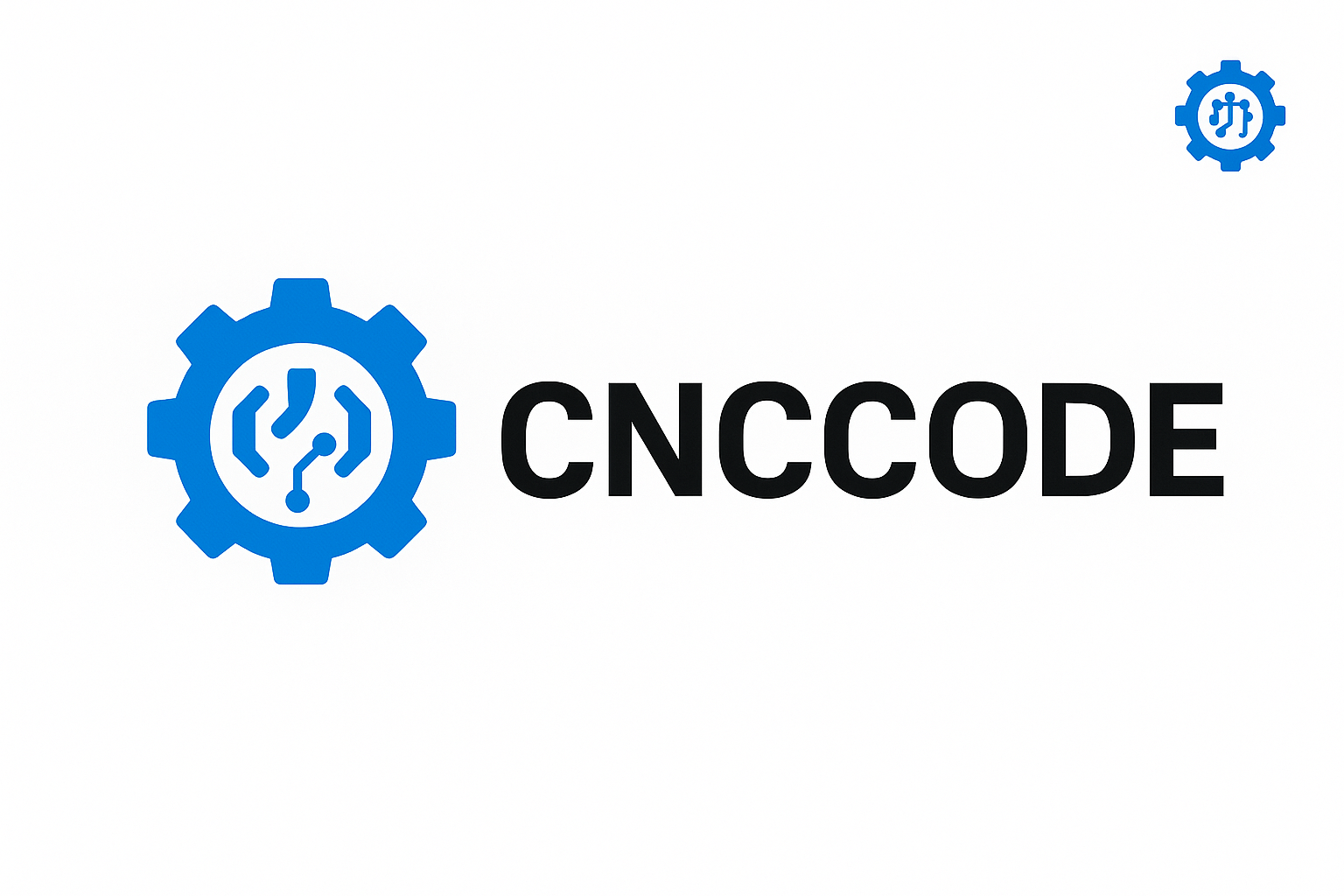Executive Summary
This exhaustive guide explores the cutting-edge of CNC machining in 2025 and beyond. You’ll dive into smart factory integration, AI-driven quality control, digital twins, hybrid manufacturing, magnetic linear drives, edge-AI, multi-axis strategies, green practices, pro-level G-code snippets, and a roadmap for future skills. Ready-to-copy code, macros, workflows and deep technical insights make this the living CNC encyclopedia your shop will rely on—only on cnccode.com.
Table of Contents
- Smart Factories & IIoT
- AI-Driven Quality & Predictive Maintenance
- Digital Twins & Virtual Commissioning
- Hybrid Additive-Subtractive Machining
- Magnetic Linear Drives & Next-Gen Motion
- Edge AI & Closed-Loop Control
- 5-Axis & Multi-Task Machining Strategies
- Sustainability & Green CNC Practices
- Pro-Level G-Code Examples & Macros
- Future Trends & Skills Roadmap
1. Smart Factories & IIoT
Modern CNC shops have become smart factories, where every machine, sensor, and tool communicates in real time over industrial IoT networks. Spindle-imbedded vibration sensors, axis temperature probes, and tool-holding load cells feed data to centralized dashboards. This allows dynamic job-queuing, live OEE tracking, and automated scheduling of maintenance exactly when needed—maximizing uptime and minimizing waste.
Key components:
- Networked PLCs and OPC UA data streams
- Vision systems for in-process inspection
- Automated pallet changers and robotic part loaders
- Central MES/SCADA integration for production analytics
2. AI-Driven Quality & Predictive Maintenance
Artificial intelligence has transformed both quality assurance and machine reliability. Machine-learning models trained on historical vibration, acoustic, and thermal data now predict bearing wear and imminent spindle failures before they occur. Computer-vision systems inspect surface finish automatically, flagging micro-scratches or dimensional anomalies in real time.
Benefits:
- Up to 50% fewer scrapped parts
- 30% extension of spindle and bearing life
- Automated defect logging linked directly to ERP
3. Digital Twins & Virtual Commissioning
A digital twin is a live, virtual replica of your CNC machines and workflows. By streaming real sensor data into a physics-based simulation, you can:
- Validate new toolpaths and fixturing without tying up physical equipment
- Train operators in VR or AR environments on the exact machine models they’ll use
- Optimize cycle times by testing multiple strategies digitally
Digital-twin-driven commissioning has cut initial setup errors by 80% for leading aerospace suppliers.
4. Hybrid Additive-Subtractive Machining
Hybrid CNC systems integrate laser-cladding or powder-bed deposition with multi-axis milling in one platform. Workflow:
- Additive phase builds near-net shapes with metal powder or wire.
- Subtractive phase uses 5-axis milling to finish critical surfaces to micron tolerances.
Benefits include 60% material savings, single-setup accuracy, and the ability to repair high-value components (e.g., turbine blades) in-house.
5. Magnetic Linear Drives & Next-Gen Motion
Replacing ball screws, magnetic linear drives use controlled magnetic fields to levitate and propel carriage stages without contact. This achieves:
- Sub-micron positioning accuracy
- Speeds exceeding 50 m/min
- Zero lubrication needs and near-zero maintenance
Early adopters in semiconductor and photonics machining report dramatic improvements in surface finish and machine availability.
6. Edge AI & Closed-Loop Control
Embedding AI models directly in CNC controllers (edge AI) enables sub-millisecond adjustments of feed and speed based on cutting-force and acoustic feedback. Closed-loop control architectures dynamically optimize toolpaths, resulting in:
- 20% faster cycle times
- 25% longer tool life
- Consistent surface quality across long runs
7. 5-Axis & Multi-Task Machining Strategies
5-axis machining lets you approach complex geometries from optimal angles, eliminating multiple setups. Key techniques:
- Tilt-and-turn table indexing for undercuts
- Trochoidal roughing keeps engagement forces constant
- Simultaneous 5-axis contouring for turbine blades and impellers
Multi-task centers add live tooling and Y-axes to traditional lathes, merging turning, milling, and drilling in a single operation.
8. Sustainability & Green CNC Practices
Eco-friendly CNC shops are adopting:
- Cryogenic cooling (liquid nitrogen) to eliminate oil-based coolants
- Chip recycling systems that reprocess metal swarf on-site
- Regenerative drives that feed braking energy back to the facility
These steps reduce environmental impact and often qualify for green manufacturing incentives.
9. Pro-Level G-Code Examples & Macros
9.1 Adaptive Trochoidal Roughing Macro
gcodeO1001 (Trochoidal Roughing Macro)
#100=0.5 (Radial step)
#101=2.0 (Axial pass depth)
G65 P2000 Q[#100] R[#101]
M98 P3000
M30
O3000 (Trochoid Subprogram)
#1=#1
#2=#2
WHILE [#2 GT 0] DO1
G01 X[#1] Y0 Z[#2] F800
G03 I[-#1] J0 F800
#2=[#2-#101]
END1
M99
9.2 Real-Time Tool Wear Compensation
gcodeO2001 (Tool Wear Compensation)
#300=0.02
#301=#5065-#5040
IF [#301 GT #300] THEN
#300=#301
G43.1 Z[#300]
ENDIF
M99
Copy these directly into your controller to implement advanced roughing and wear-tracking workflows.
10. Future Trends & Skills Roadmap
To stay ahead, CNC professionals should master:
- Digital twin setup & AR/VR simulation
- Edge-AI programming on modern controllers
- Hybrid process development combining additive/subtractive steps
- Green machining techniques and cryogenic processes
- Magnetic drive integration and closed-loop architectures
Final Call-to-Action
Bookmark this page as your living CNC encyclopedia on cnccode.com. Return often for the latest tutorials, code libraries, community Q&A, and in-depth case studies. Let’s shape the future of machining—together!

Leave a comment